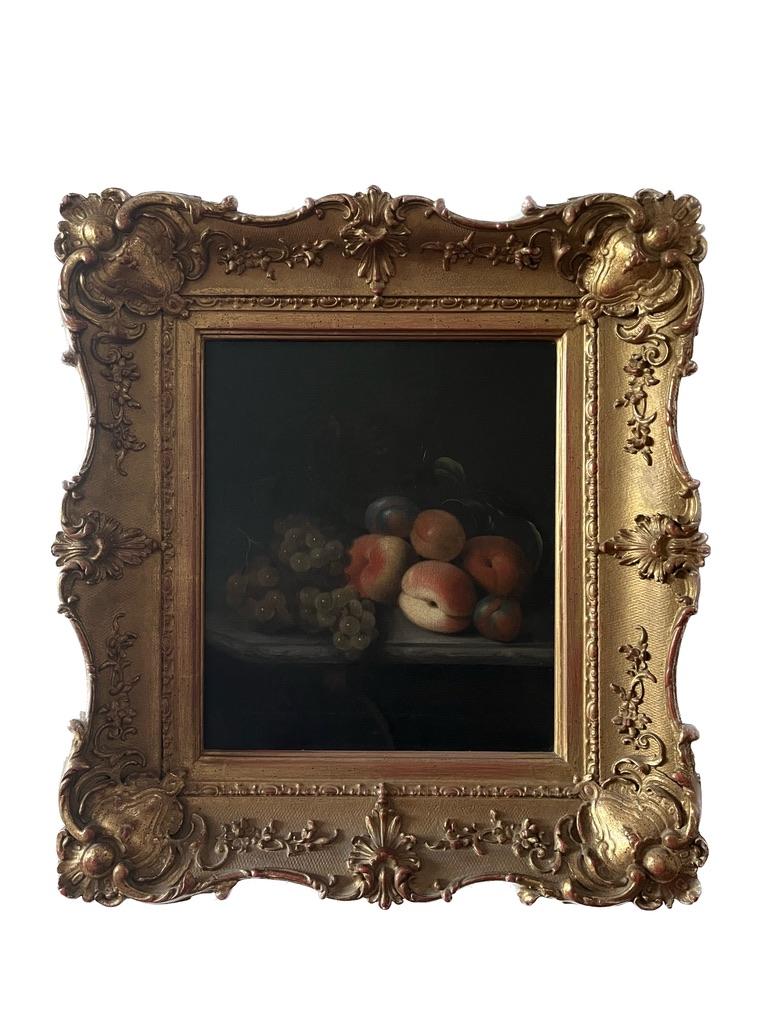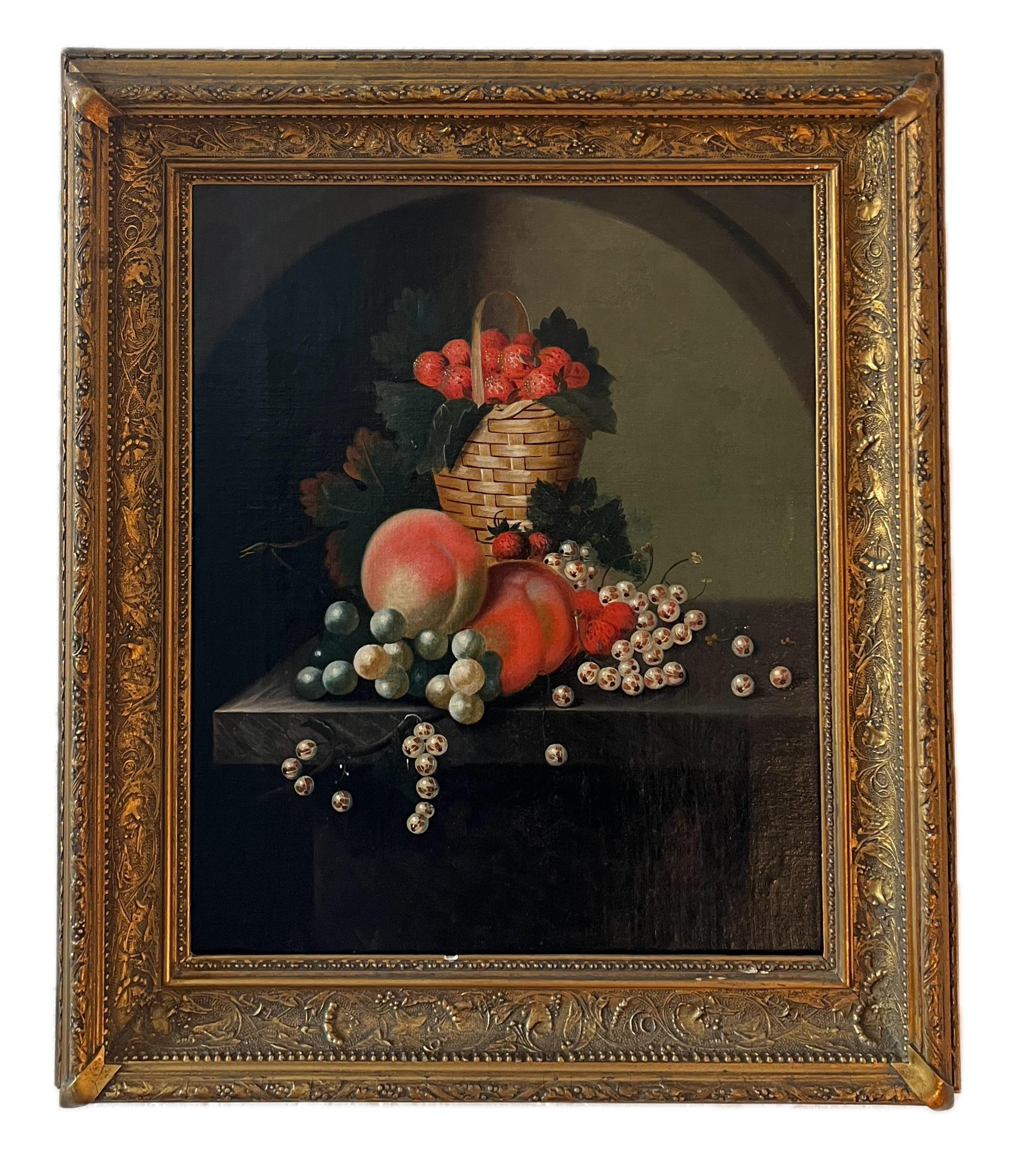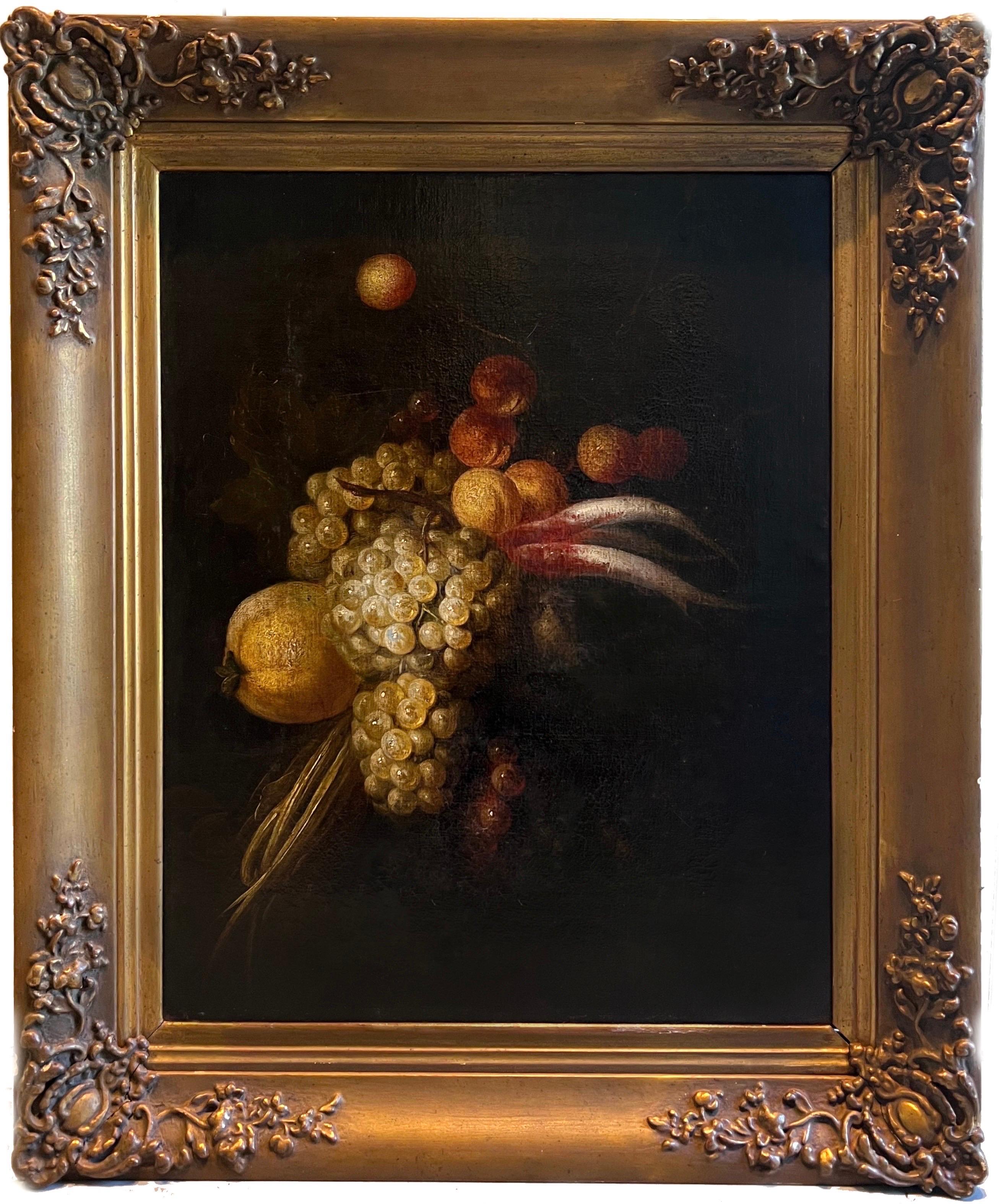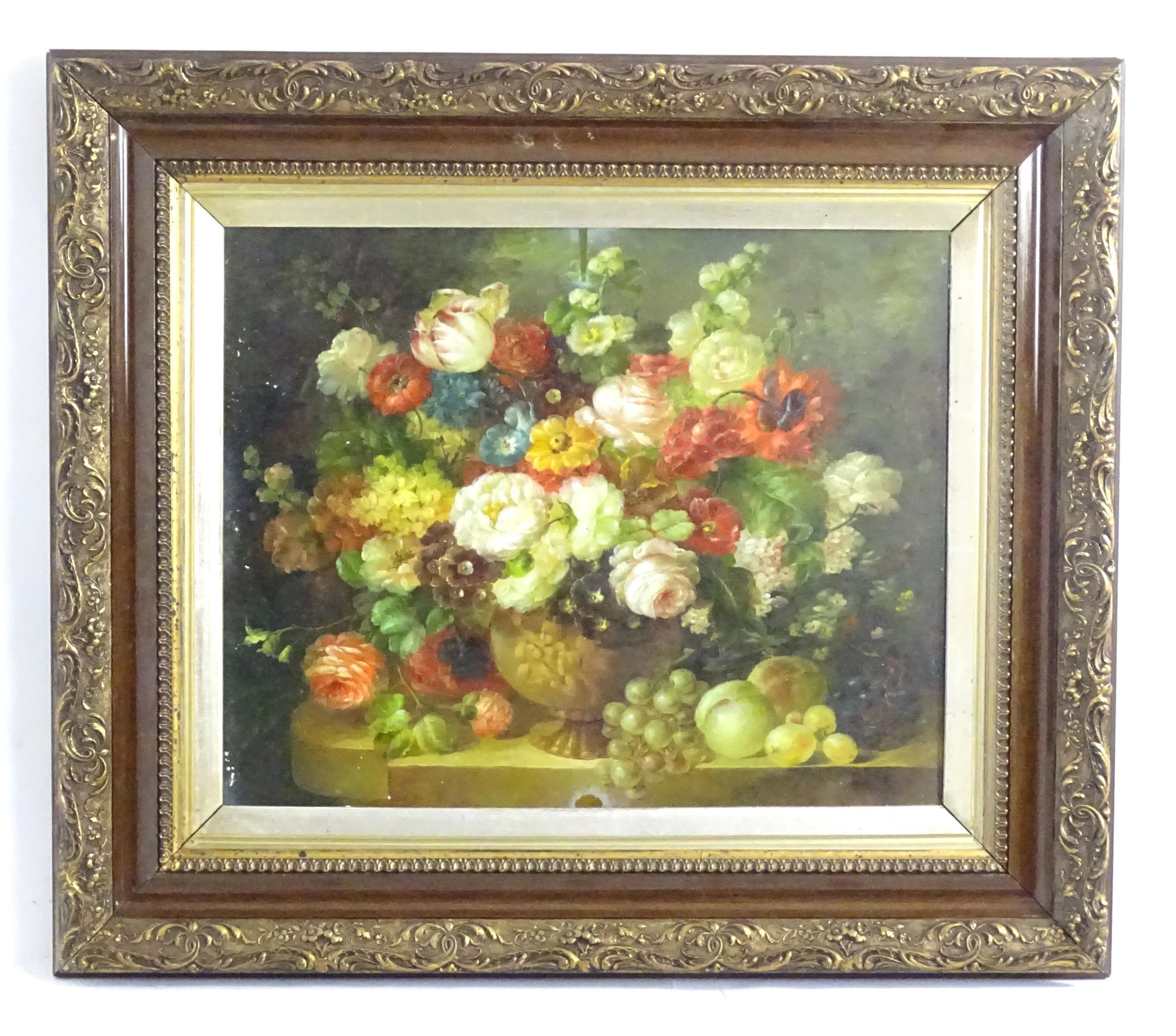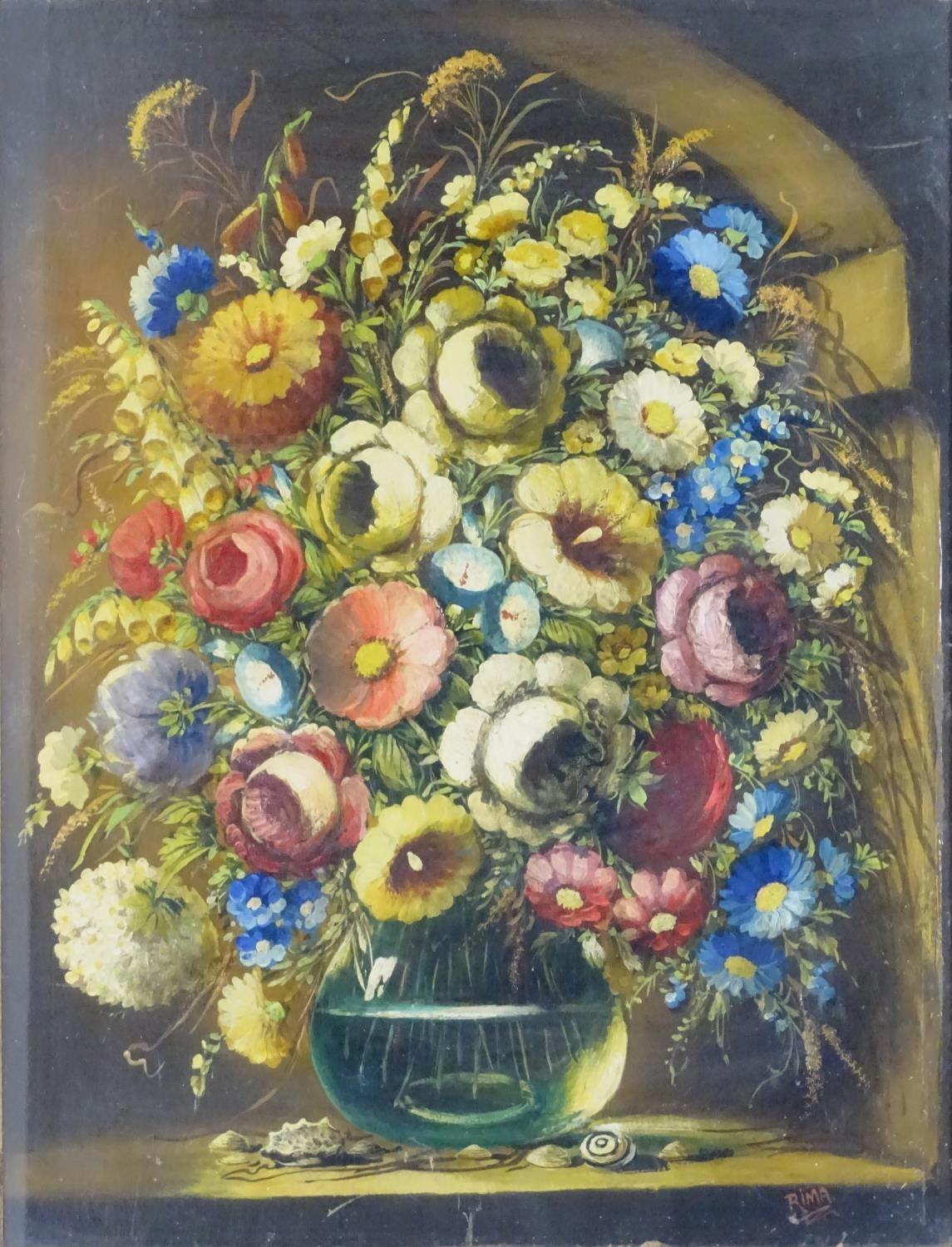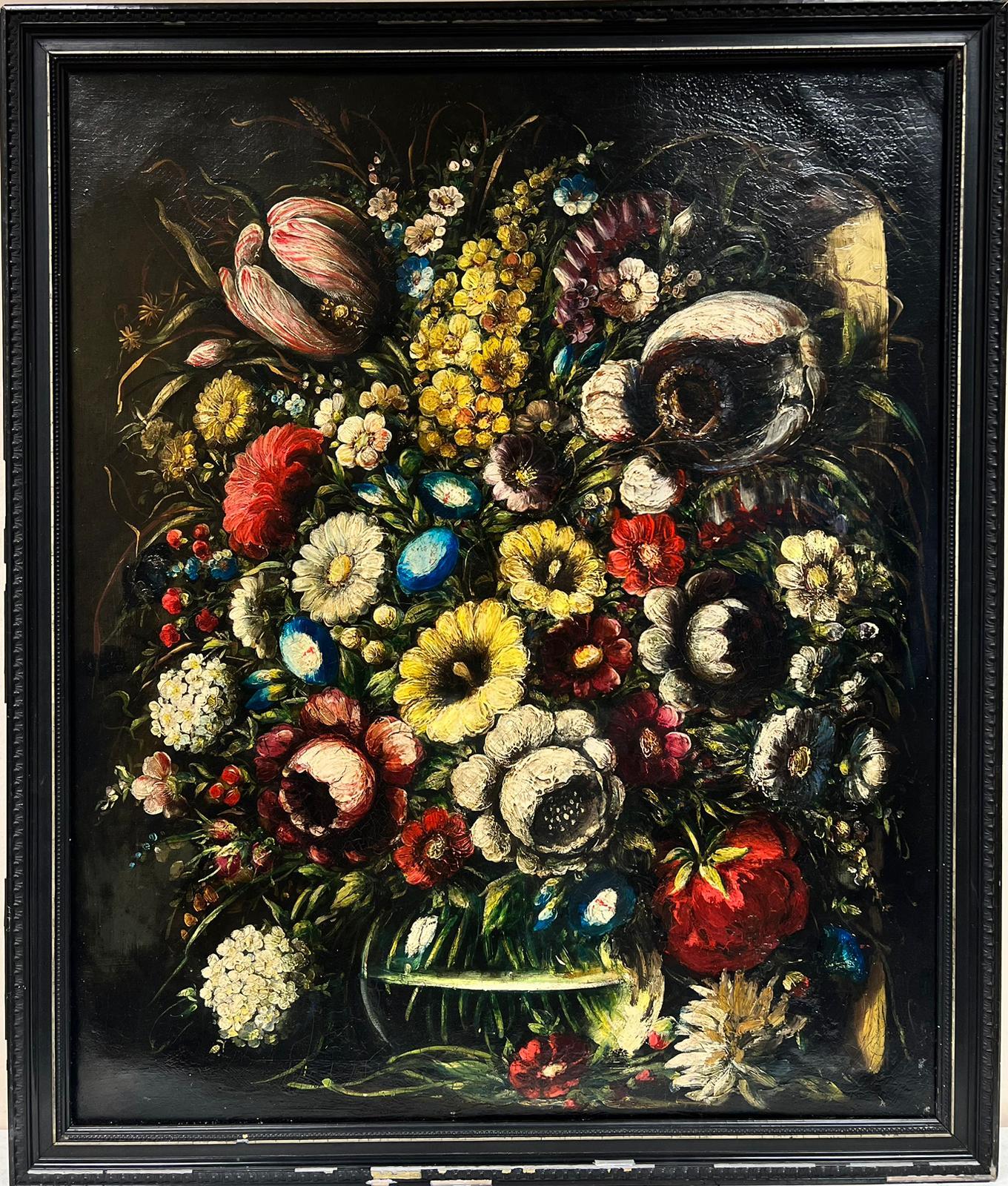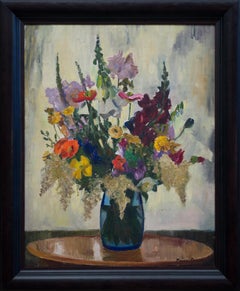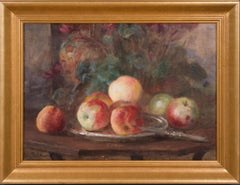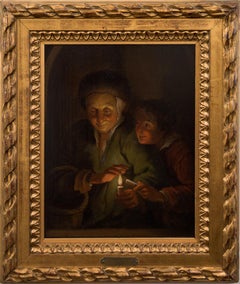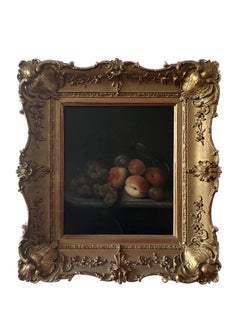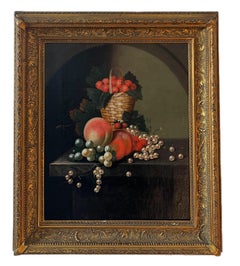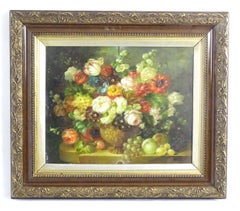Artículos similares a Still Life with Oysters - The earliest known still life in Swedish art history
¿Quieres más imágenes o vídeos?
Solicita imágenes o vídeos adicionales al vendedor
1 de 13
Govert Dircksz CamphuysenStill Life with Oysters - The earliest known still life in Swedish art historyc. 1652–63
c. 1652–63
Acerca del artículo
This previously unpublished painting was first securely attributed to Govert Dircksz Camphuysen in 1944, following an examination at the Nationalmuseum in Stockholm during which the artist’s signature was discovered. As this attribution was not known to Bengt Rapp, the painting is not included in his thorough survey of the artist’s life and work during his Swedish period (1652–63), published in Djur- och Stilleben i karolinskt måleri (1951, pp. 15–26). The work is of considerable art historical importance. Alongside another undated still life by Camphuysen, Still Life with Provisions and a Cat (formerly in the De Geer collection at Finspång Castle), it is considered the earliest known still life in Swedish art history (op. cit., p. 24). These works mark the beginning of still life painting in Sweden. Through them, Camphuysen introduced a new subject matter that would later be taken up by the Swedish-born painter Christian Thum (c. 1625–1686).
Like many artists of his time, Camphuysen was drawn by reports of growing artistic patronage in Sweden and decided to seek opportunity in service of the emerging great power. In the spring of 1652, he left Amsterdam with his family and arrived in Skåne in the autumn. From 1653, he was active at the court of Dowager Queen Maria Eleonora in Nyköping (widow of Gustavus Adolphus and mother of Queen Christina). Records from her account books in 1654 reveal that Camphuysen undertook several journeys on her behalf, including to Arboga and Ulfsunda. In August that year, he returned from Ulfsunda in the dowager queen’s retinue (op. cit., pp. 17–18). That same year, he also executed a large painting, Cows and Peasants (2 x 2 m), now at Övedskloster in Skåne.
Following the dowager queen’s death on March 28, 1655, Camphuysen moved to Stockholm. His name appears regularly in the baptismal records of the German Church there until 1661. According to Old Granberg (Konsthistoriska studier och anteckningar, 1895, p. 46), Camphuysen also served as court painter to King Charles X Gustav after Queen Christina’s abdication. It was during this period that he produced what is perhaps his most famous work, The Royal Castle of Tre Kronor, dated 1661—an iconic topographical view of seventeenth-century Stockholm (Stockholm City Museum). In his final years in Sweden, Camphuysen was employed by Magnus Gabriel De la Gardie at Jacobsdal (now Ulriksdal Palace). Castle records show that he was working on decorative commissions in the great hall there in 1662–63 (Rapp, op. cit., p. 25). He returned to Amsterdam in 1665.
The present painting was formerly part of the collection at Ekhof, an estate with roots in the 16th century. In 1566, Sigvard Månsson Kruse af Elghammar (1578–1624) purchased one of the two tax farms in the village, converting it into a noble estate. His son, General Erik Kruse af Kajbala (1616–1665), was granted tax exemption in 1653 and built a manor originally named Ånhammar. The estate was inherited by his son, Carl Gustaf af Kruse (1651–1732), and remained in the family until 1720. During her husband’s captivity in Russia following the Battle of Poltava, Charlotta Catharina, Carl Kruse’s wife, sold the property. It was then acquired by the widow Belau (or Below), and the estate became known as Ekhammarshof and later Ekhof. It subsequently passed to her son-in-law, Gudmund Adelberth. Her granddaughter, Hedvig Charlotta von Fuhrman, married Ture Johan Bielke in 1768. He had the current main building erected around 1790; it was completed in 1792. Involved in the conspiracy to assassinate King Gustav III, Bielke took his own life by poison to avoid prosecution. His widow remained on the estate until 1795. Later owners include von Baumgarten (1799), Wachtmeister (1816), Edlund (1825), Lönnerberg (1849), and Aspelin (1856). From 1926, the estate belonged to the Björling family, and in 1978 it was acquired by Johan and Lena Rinman. Today, the estate operates under Ekhov Säteri AB.
signed “G. Camphuysen fecit”
oil on panel
unframed 29.8 x 36 cm (11¾ x 14¼ in.)
framed 40 x 46 cm (15 ¾ x 18 ⅛ in)
Provenance:
Ekhof, Björnlunda Parish, Gnesta Municipality, Södermanland, Sweden
Expertise:
Stéphane Pinta, Cabinet Turquin, Paris
Condition:
The painting underwent a comprehensive conservation between 2024 and 2025 under the care of Sonia Leon. The aged varnish was removed, and areas affected by age-related wear were carefully retouched.
- Creador:Govert Dircksz Camphuysen (1623 - 1672, Holandés)
- Año de creación:c. 1652–63
- Dimensiones:Altura: 40 cm (15,75 in)Anchura: 46 cm (18,12 in)
- Medio:
- Movimiento y estilo:
- Época:1650-1659
- Estado:The painting underwent a comprehensive conservation between 2024 and 2025 under the care of Sonia Leon. The aged varnish was removed, and areas affected by age-related wear were carefully retouched.
- Ubicación de la galería:Stockholm, SE
- Número de referencia:1stDibs: LU1445216449362
Sobre el vendedor
5,0
Vendedor Platino
Vendedores premium con una calificación de +4,7 y tiempos de respuesta de 24 horas
Establecido en 2020
Vendedor de 1stDibs desde 2020
181 ventas en 1stDibs
Tiempo de respuesta usual: <1 hora
Asociaciones
International Confederation of Art and Antique Dealers' Associations
- EnvíoRecuperando presupuesto…Envío desde: Stockholm, Suecia
- Política de devolución
Partes de esta página se han traducido automáticamente. 1stDibs no puede garantizar la exactitud de las traducciones. El inglés es el idioma predeterminado de este sitio web.
Garantía de autenticidad
En el improbable caso de que haya algún problema con la autenticidad de un artículo, ponte en contacto con nosotros en un plazo de 1 año para recibir un reembolso total. DetallesGarantía de devolución de dinero
Si tu artículo no es como se describe, sufre daños durante el transporte o no llega, ponte en contacto con nosotros en un plazo de 7 días para recibir un reembolso total. DetallesCancelación dentro de las 24 horas
Tienes un período de gracia de 24 horas para reconsiderar tu compra, sin preguntas.Vendedores profesionales aprobados
Nuestros vendedores de primera clase deben cumplir estrictos estándares de servicio para mantener la integridad de nuestros anuncios.Garantía de igualación de precios
Si encuentras que un vendedor publicó el mismo artículo por un precio menor en otro lado, igualaremos ese precio.Entrega global de confianza
Nuestra red de transporte de primera ofrece opciones de envío especializado en todo el mundo, que incluye envío personalizado.Más de este vendedor
Ver todoSinfonía floral, 1936 por el artista del grupo Rackstad Ture Ander
Ture Ander (1881-1959) Suecia
Sinfonía floral, 1936
óleo sobre tabla
firmado y fechado Ture Ander 36
dimensiones del tablero 62 x 48 cm (24,41 x 18,90 pulgadas)
marco 74 x 61 cm (2...
Categoría
Década de 1930, Moderno, Pinturas de naturaleza muerta
Materiales
Óleo, Tablero
Ramo de Digitalis, Amapola, Iris, Snapdragons, Aciano, Ranúnculo, 1936
Ture Ander (1881-1959) Suecia
Un Ramo de Digitalis, Amapola, Iris, Snapdragons, Aciano, Ranúnculo. 1936
óleo sobre tabla
firmado y fechado Ture Ander 36
dimensiones del tablero 62 ...
Categoría
Década de 1930, Moderno, Pinturas de naturaleza muerta
Materiales
Óleo, Tablero
3430 US$ Precio de venta
Descuento del 22 %
Bodegón con manzanas, c. 1910
Naturaleza muerta con manzanas es un exquisito bodegón que capta un momento tranquilo de abundancia y paz. Sobre una humilde mesa de madera hay un racimo de manzanas maduras, cuyas p...
Categoría
Década de 1910, Realista, Pinturas de naturaleza muerta
Materiales
Lienzo, Óleo
Anciana y niño con velas, óleo sobre tabla, 1800
En este cuadro titulado "Anciana y niño con velas" se desarrolla ante nuestros ojos una intrigante escena. Una mujer mayor mira al frente, con los ojos protegidos de la luz parpadean...
Categoría
siglo XIX, Antiguos maestros, Pinturas de interiores
Materiales
Óleo, Panel de madera
Erudito afilando su pluma Penn Atribuido a Justus Juncker, Óleo sobre tabla
Justus Juncker (1703-1763, Alemania) Atribuido a
Erudito afilando su pluma Penn
Experiencia: Queremos agradecer al Dr. Fred G Meijer sus valiosos conocimientos en la investigación ...
Categoría
principios del siglo XVIII, Antiguos maestros, Pinturas figurativas
Materiales
Roble, Óleo, Panel
15.262 US$ Precio de venta
Descuento del 25 %
Envío gratuito
Erudito afilando su pluma Penn Atribuido a Justus Juncker, Óleo sobre tabla
Justus Juncker (1703-1763, Alemania) Atribuido a
Erudito afilando su pluma Penn
Experiencia: Queremos agradecer al Dr. Fred G Meijer sus valiosos conocimientos en la investigación ...
Categoría
principios del siglo XVIII, Antiguos maestros, Pinturas figurativas
Materiales
Roble, Óleo, Panel
15.698 US$
Envío gratuito
También te puede gustar
Raro bodegón inglés del siglo XVIII de uvas y melocotones
Un bodegón raro y muy atractivo de William Smith de Chichester. Las suntuosas texturas de los melocotones y las uvas contrastan con el fondo oscuro. Una pieza realmente bella del sig...
Categoría
siglo XVIII, Antiguos maestros, Pinturas de naturaleza muerta
Materiales
Óleo, Lienzo
4484 US$
Envío gratuito
Raro bodegón inglés del siglo XVIII de uvas, melocotones y fresas
A rare and most attractive still life by William Jones of Bath. The sumptuous textures of the peaches, grapes and strawberries contrasting with the dark background. A really handsome...
Categoría
siglo XVIII, Antiguos maestros, Pinturas de naturaleza muerta
Materiales
Óleo, Lienzo
2373 US$ Precio de venta
Descuento del 31 %
Bodegón del siglo XVII Opulento despliegue de uvas, ciruelas pasas y un limón
Antiguo bodegón del siglo XVII que representa un opulento racimo de uvas, rodeado de otras frutas como ciruelas pasas, rábanos largos y un limón.
Creada hace más de 300 años, casi c...
Categoría
siglo XVII, Antiguos maestros, Pinturas de naturaleza muerta
Materiales
Lienzo, Óleo
Bodegón clásico al óleo muy grande Estudio de frutas y flores
Por Emilio Greco
Manera de Emilio Greco, siglo XX
óleo sobre tabla, enmarcado
enmarcado: 24 x 29 pulgadas
tablero: 16 x 20 pulgadas
procedencia: colección privada, Inglaterra
El cuadro está en muy bu...
Categoría
siglo XX, Antiguos maestros, Pinturas de naturaleza muerta
Materiales
Óleo
Bodegón Clásico Estudio De Flores En Jarrón Elaborado Gran Marco Dorado
Rima (inglés, siglo XX) *ver notas más abajo
óleo sobre tabla firmado, sin enmarcar
tablero: 31 x 24 pulgadas
Procedencia: Colección británica
El cuadro tiene algunas rozaduras y ara...
Categoría
siglo XX, Antiguos maestros, Pinturas de naturaleza muerta
Materiales
Óleo
Bodegón clásico Flores en cuenco de cristal, estilo Viejo Maestro óleo sobre lienzo
Por German School
German School, principios del siglo XX
óleo sobre lienzo, enmarcado
enmarcado: 33 x 27,5 pulgadas
lienzo 30 x 25 pulgadas
colección privada, Reino Unido
el cuadro está en general en ...
Categoría
principios del siglo XX, Antiguos maestros, Pinturas de naturaleza muerta
Materiales
Lienzo, Óleo
